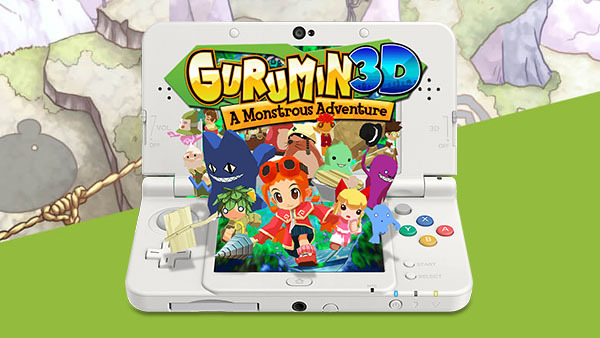
Dear Reader:
Mastiff talks Gurumin 3D localization, 3DS challenges
A portion of a MonsterVine interview with President and CEO of Mastiff Games, Bill Swartz, and David Bruno...
MV: Can you tell me the general process of localizing at Mastiff? What are some of the major difficulties that may arise when localizing a game?
Bill: That’s a hard one, because every project is really different. There are two BIG barrels, like how to deal with mass quantities. There are games with, effectively, 500,000 words, basically huge text novels. We don’t really do them, as there’s so much in them that we didn’t think we could do the translation at a cost-effective basis. The other issue is how do you go about quality?
There are lots of people who are okay with translated games sounding a bit funny, as part of the charm. I personally hate that view, as I love language, and want players to have an experience that’s as parallel to the original game as possible. The translated game experience should feel the same as the native game experience, unless there’s a character who intentionally speaks like that.
Translating a game into Spanish or French is like refining a suit, where you just fix up the suit a bit. From English to Japanese or vice versa, you’re kind of reweaving the fabric. There’s a practice that drives me bonkers, and it’s that you do a quick and cheap first translation, then have someone else rewrite it. The problem with that process is in that first translation, all of the meaning behind the original script is washed out. It’s like boiling a fruit, and trying to chemically re-flavor it. The fact is, all of the flavor is gone.
MV: What was the localization process for Gurumin specifically like? Was it standard fare, or was it a huge challenge?
Bill: It was fine, there were no curve-balls or anything. One of the big things is the quality of the original game. It’s tempting to look at Japanese games as some type of holy text, because it seems mysterious because you can’t read it. And sometimes it really is beautiful, but if you start with a crummy source, what do you do with that? So we try to pick games that are well-crafted.
MV: Outside of what you mentioned, were there more limitations with the 3DS that you had to work around with Gurumin?
Bill: The devil’s in the details. Everything falls into two buckets: controls and optimization. We tweaked it a bit and added a camera control and a better help system, but a game is a game. We spent a long time figuring out what to do with the lower screen, but it was really all about optimization. We could have just put it all in as-is so it ran at 20fps and was just “okay”, but I’m really proud of what we did. You have to make sure anything that’s graphically unnecessary has to be trimmed a bit, so polygons that aren’t seen on camera don’t need to be there unless they’re seen. We were really focused on putting this fantastic game out there, and we did it, and again, I’m proud of how solid it is.

